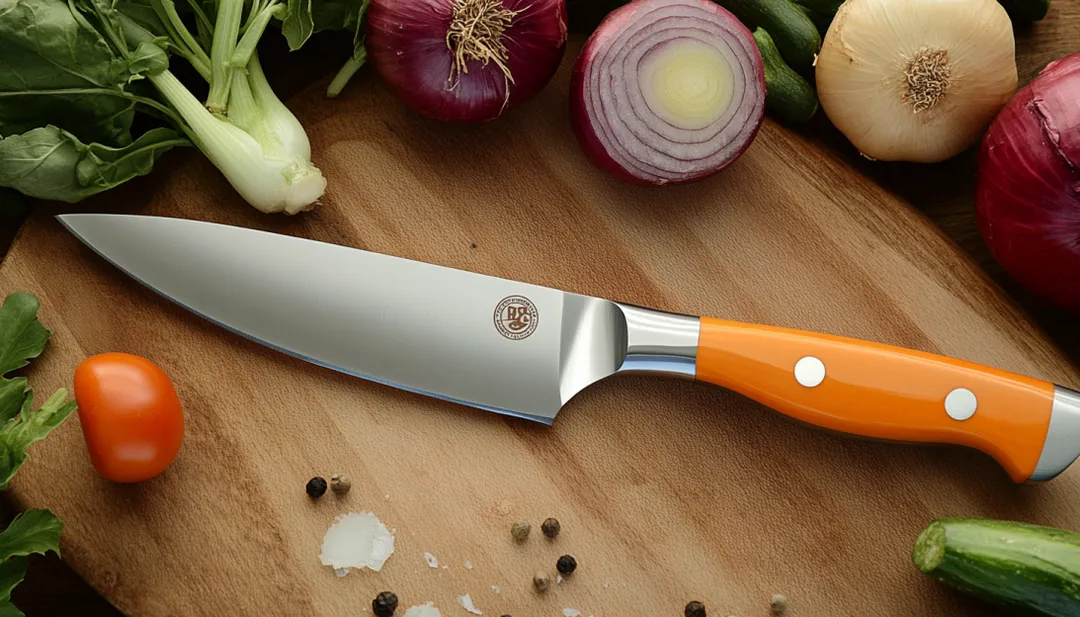Why Are Chef Knives So Expensive?
If you’ve ever browsed a kitchenware aisle or scrolled through online stores, you might have noticed the stark price differences between chef knives. Some are surprisingly affordable, while others can cost hundreds—even thousands—of dollars. So, why are chef knives so expensive? Is there really a reason behind these hefty price tags, or are they just a culinary status symbol? Let’s dive into the world of chef knives and uncover why some of them are priced like pieces of fine art.
The Craftsmanship Behind Kitchen Chef Knives
When you’re holding a premium chef knife, you’re not just gripping a tool; you’re holding the result of intricate craftsmanship and often years of expertise.
- Handmade vs. Mass-Produced: High-end chef knives are often handmade, which means each blade is individually crafted and inspected. Skilled artisans take their time forging, grinding, sharpening, and polishing each forged knife, ensuring perfection. This kind of detailed labor is time-consuming and costly, especially when compared to factory-made knives that are mass-produced using machines. With handmade knives, every curve, edge, and handle has been meticulously shaped, which adds to the price.
- Traditional Techniques: Many expensive chef knives are produced using time-honored techniques passed down through generations, particularly in regions famous for their knife-making, like Japan. Some methods, such as the forging process used in Japanese blades, are highly specialized and take years to master. These techniques are far more labor-intensive and produce a higher-quality blade.
Quality of Chef Knife Materials
A significant factor in the price of a chef knife is the materials used to make it. High-quality materials typically cost more, but they also result in a knife that’s more durable, sharp, and precise.
- Blade Material: The metal used for the blade is often the first thing that sets expensive knives apart. Many cheap knives are made from lower-grade stainless steel, which dulls quickly and can even rust over time. Premium chef knives, on the other hand, are often made from high-carbon stainless steel or Damascus steel. High-carbon steel holds a sharper edge for longer, while Damascus steel is not only functional but also visually stunning, thanks to its wavy, layered design. This specialized steel is harder to work with and more expensive to source, contributing to the knife’s price.
- Handle Material: It’s not just the blade that matters. The handle also plays a critical role in how a chef knife performs and feels. Cheap knives often come with plastic handles that can crack or wear down over time. More expensive knives might feature handles made from exotic woods, resin-infused hardwoods, or durable synthetics like G10 (a high-pressure fiberglass laminate). These materials not only look better but also provide better grip, balance, and durability. Premium handle materials add to both the aesthetics and the overall price of the knife.
Chef Knife Precision and Sharpness
Anyone who cooks regularly knows the difference between a sharp, balanced steel knife and a dull one. Expensive chef knives tend to stay sharper for longer and are easier to sharpen when they do dull, making them a better long-term investment for those who cook frequently.
- Blade Geometry: Premium knives are often sharpened to a finer edge, meaning they can make cleaner, more precise cuts. This is particularly important for chefs or home cooks who need to slice delicate ingredients like herbs, fish, or thin vegetables. Some chef knives, especially those made in Japan, have extremely acute angles on their blades, making them razor-sharp. Achieving this level of sharpness requires skill and specialized machinery, which again drives up the price.
- Edge Retention: The ability of a knife to stay sharp over time is called edge retention, and it’s one of the key reasons some kitchen knives are more expensive. Higher-quality steels, like VG10 or SG2 (found in premium Japanese knives), have better edge retention compared to the cheaper steel used in budget knives. This means less frequent sharpening and a knife that performs beautifully for years.
Durability and Longevity
Investing in a good knife is like buying a well-made tool—it’s meant to last. Cheap knives tend to wear out faster, requiring frequent sharpening or even replacement within a few years. Expensive chef knives, on the other hand, can last a lifetime if properly cared for.
- Full Tang Construction: Many expensive chef knives are “full tang,” meaning the blade’s metal extends through the handle’s entire length. This provides better balance, strength, and durability compared to knives with partial tang or no tang at all. Full tang knives are more expensive to produce but are significantly more robust.
- Forged vs. Stamped Blades: Forged knives (typically more expensive) are made by heating a single piece of steel and then shaping it into a blade. This process makes the kitchen knife stronger and more durable compared to stamped knives, which are cut out from a sheet of metal. Forging is a more labor-intensive process that results in a knife with better balance and edge retention.
Brand and Reputation
Sometimes, a brand name can significantly influence the price of a chefs knife. Renowned knife-makers like Shun, Wüsthof, or Miyabi have built a reputation over decades (or centuries) for producing some of the best kitchen knives in the world. These brands are trusted by professional chefs, culinary schools, and serious home cooks alike.
- Heritage: In regions like Solingen, Germany, or Seki City, Japan, knife-making is an art form with deep historical roots. Many high-end knife brands come from these areas, and the tradition, history, and reputation add to the value of their knives.
- R&D and Innovation: Top knife brands also invest heavily in research and development. Whether it’s experimenting with new steel alloys, ergonomic handle designs, or more efficient manufacturing techniques, this innovation comes at a cost. Companies like Global or Zwilling are constantly improving their products to stay ahead in a competitive market.
Customization and Design
Some knives are expensive simply because they are custom-made or part of a limited edition series. If a knife is handmade to order, with the customer choosing the type of steel, handle material, and even the knife’s shape, it will naturally cost more than a standard factory-made knife.
- Limited Editions and Special Collaborations: Sometimes, knife makers collaborate with famous chefs or artists to create limited edition collections. These knives are as much about art and design as they are about function. Owning one of these exclusive pieces is a status symbol, and collectors or enthusiasts are often willing to pay a premium for them.
- Aesthetic Details: The aesthetic aspects of some chef knives can also drive up the cost. Damascus steel, for instance, is known for its beautiful swirling patterns. Knife makers might also add custom engravings, decorative pins, or even gold inlays to create a knife that’s visually stunning. While these features don’t necessarily improve the knife’s cutting ability, they certainly make it more desirable as a luxury item.
The Chef’s Experience
At the end of the day, why are chef knives so expensive comes down to the experience they offer. A high-end chef knife can significantly improve your cooking, making food preparation smoother and more enjoyable.
- Ergonomics: Expensive chef knives are often designed with ergonomics in mind, making them more comfortable to use for long periods. They are balanced so that the weight of the knife feels just right in your hand, reducing fatigue during extended cutting sessions. For professional chefs or serious home cooks, this level of comfort can be invaluable.
- Efficiency and Performance: The sharpness, balance, and precision of an expensive chef knife translate to better efficiency in the kitchen. With a well-made knife, you can slice through ingredients with less force, which speeds up prep work and leads to cleaner, more consistent precise cuts. For someone who spends hours in the kitchen, these small improvements in performance can make a big difference.
Final Thoughts: Is It Worth the Investment?
So, why are chef knives so expensive? It comes down to a combination of factors: superior materials, expert craftsmanship, brand reputation, and the overall experience. For professional chefs or avid home cooks, investing in a high-quality knife can be a game-changer in the kitchen. It’s not just about having a sharp blade—it’s about having a tool that makes cooking more enjoyable, efficient, and precise.
However, if you’re a casual cook who only uses a knife occasionally, you might not need a top-tier, expensive option. There are many excellent mid-range chef knives that offer great performance at a more affordable price point. But for those who are passionate about cooking and want a tool that will last a lifetime, the cost of a premium chef knife is often justified.
Ultimately, when you’re buying a chef knife, you’re investing in more than just a piece of metal. You’re investing in a tool that reflects years of tradition, expert craftsmanship, and innovative design—a tool that can transform the way you cook.




